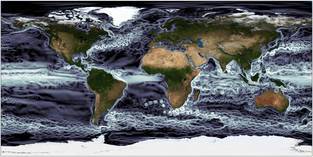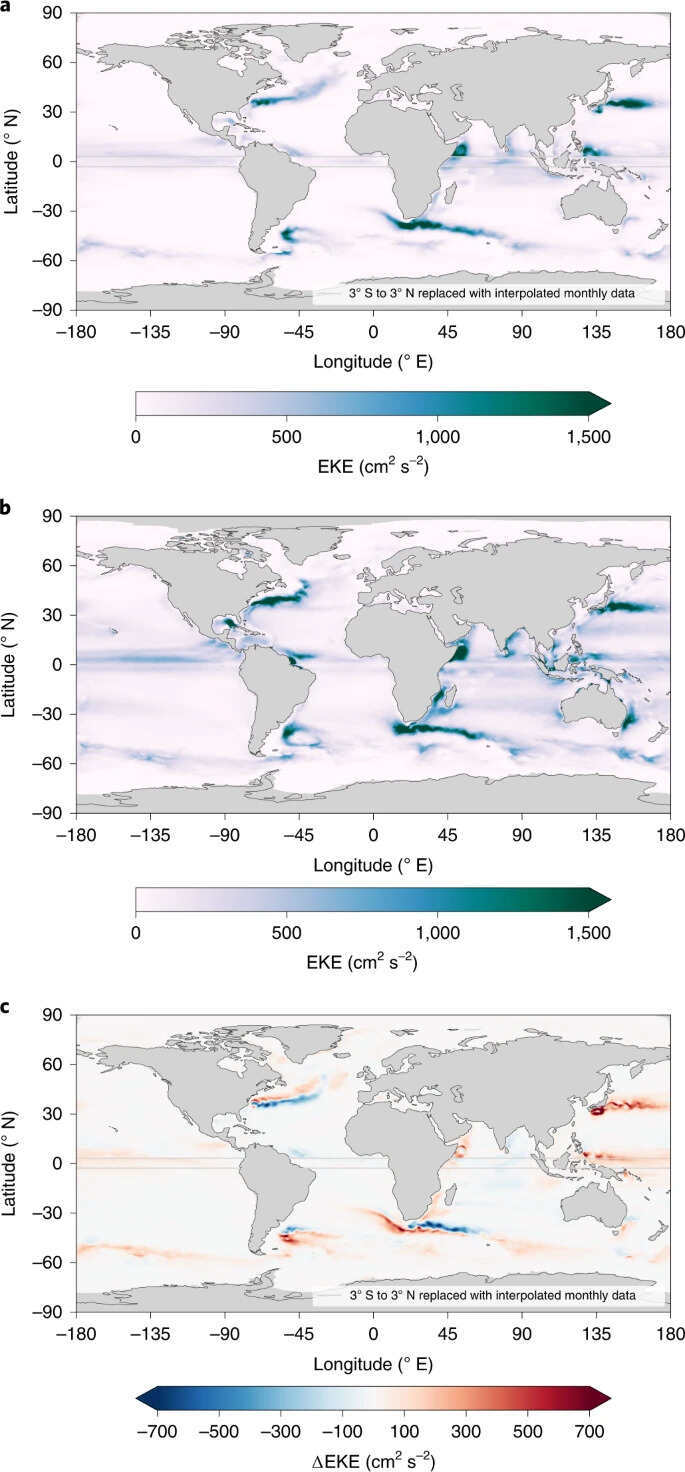EERIE project uses supercomputers for improved Earth system simulations

The ocean has a large effect on our planet’s climate. In this regard, mesoscale – i.e., medium-sized – eddies, which constitute essentially the weather on the ocean, could be far more important than previously believed. Accordingly, a new project, led by the Alfred Wegener Institute has just been launched to assess this aspect. By doing so, “European Eddy Rich Earth System Models” (EERIE) could significantly improve today’s Earth system models and therefore projections of the climate’s future development.
Eddies come in a range of sizes, with diameters from only a few meters to several kilometers. Their influence on the climate depends on their size. Although these eddies have existed for some time, we still have limited quantitative information on their role, bearing in mind the impacts of a warming climate (Beech et al. 2022). A new EU-financed project aims to change that: with the aid of “European Eddy Rich Earth System Models” (EERIE), eddies will be more realistically represented in climate models – i.e., by the laws of physics rather than empirical parameterizations. 
EERIE’s goal is to help produce a new generation of Earth system models (ESMs). To do so, it will focus on improving the simulation of mesoscale eddies, which, depending on the region, can be anywhere from five to 40 kilometers wide. The supercomputer modeling improvements will include e.g. the inclusion of open channels of water (“leads”) in sea ice, where the ocean influences the atmosphere via powerful heat fluxes. “The technological hurdles to achieving these high-resolution simulations are immense,” says Prof Thomas Jung, responsible for coordinating the project at the Alfred Wegener Institute, Helmholtz Centre for Polar and Marine Research (AWI). “In order to allow quantitative statements, EERIE will have to achieve a simulation rate of up to five simulated years per day on the latest pre-exascale supercomputers available in Europe. Here, efficiency is a key factor – also to keep the simulations’ energy consumption and CO2 footprint to a minimum.” In order to implement, save and analyze these complex high-resolution simulations, the researchers will have to work hand in hand with software engineers to develop radically new software technologies.
In the course of the project, the researchers also plan to develop new simulation protocols, contributing to national and international climate change assessments in the process. In this way, EERIE is to yield valid and directly applicable climate information and to make valuable contributions in preparation for the IPCC’s next Assessment Report.
The project budget is over 10 million euros. 17 partner institutions are involved, including seven universities. The kick-off event for EERIE took place on 23 and 24 February 2023. The project, which officially began on 1 January 2023, will continue for four years.

 How to resolve AdBlock issue?
How to resolve AdBlock issue?